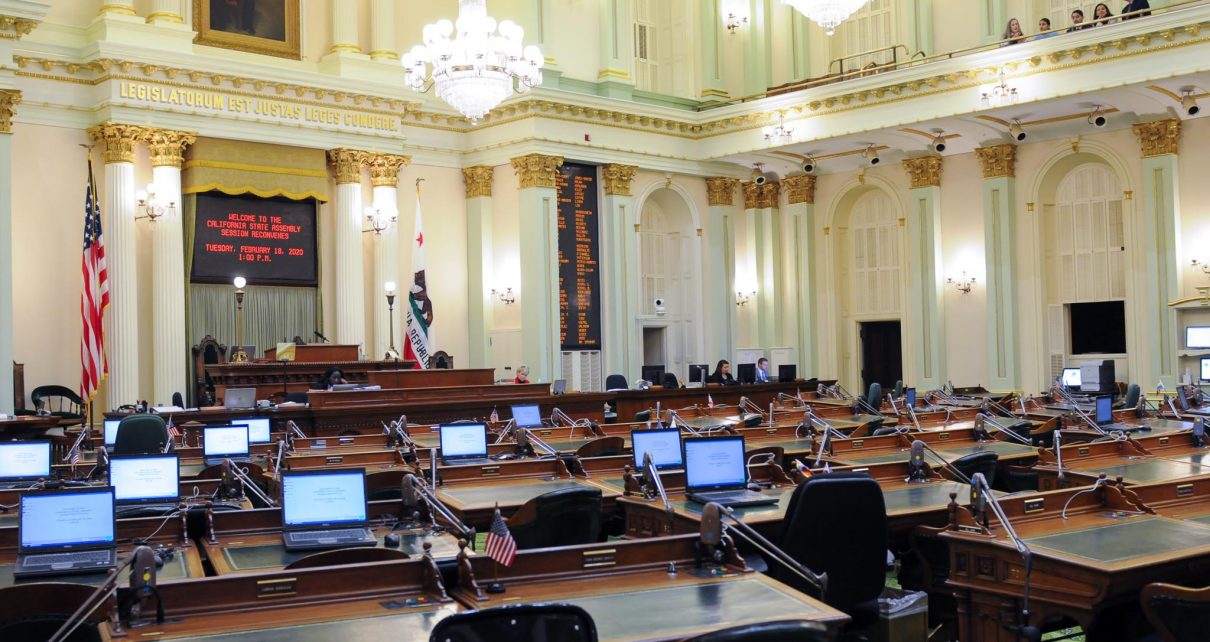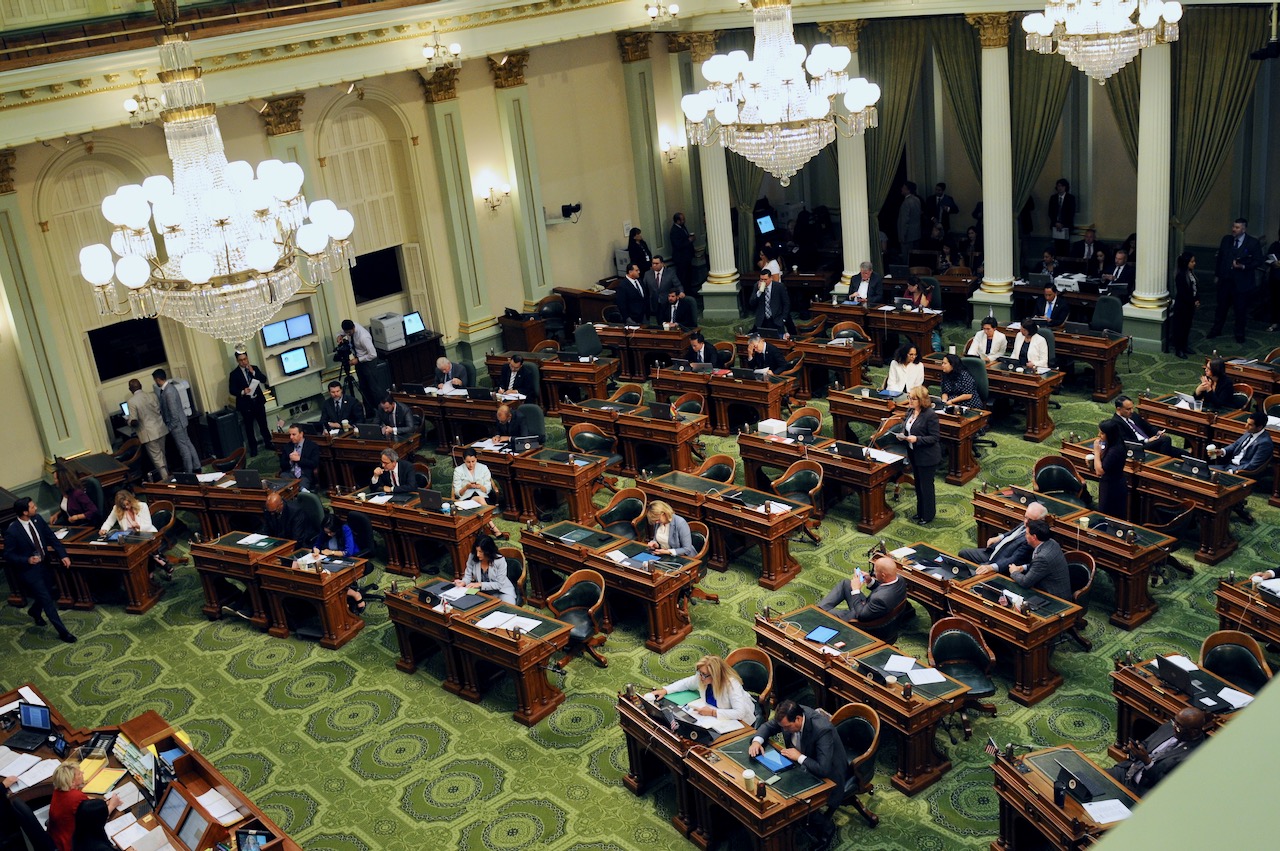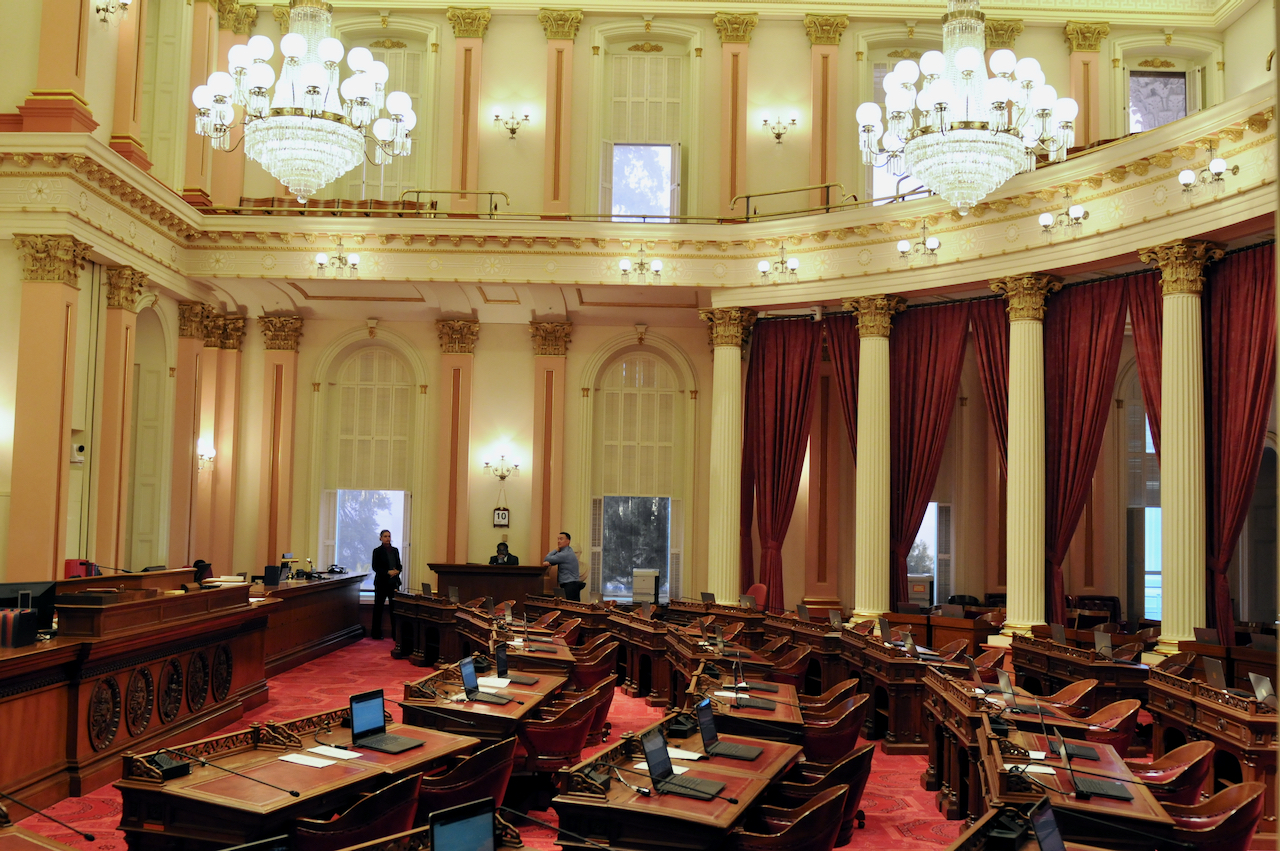
California State Assembly. (Photo: Kevin Sanders for California Globe)
General Outline of a California Bill
Some bills have fewer provisions, while other bills contain additional provisions
By Chris Micheli, September 24, 2022 3:33 pm
A bill in the California Legislature can be short or long in its length, and simple or complex in its provisions. Nonetheless, the following examples constitute the general outline of a bill in California as drafted by the Office of Legislative Counsel. Of course, some bills have fewer provisions, while other bills contain additional provisions.
Short Title
If a bill has a title, which most bills do not, the title is usually the first item in a bill. The following is an example:
DIVISION 20.6.6 Sea Level Rise Revolving Loan Pilot Program
30975.
This division shall be known, and may be cited, as the Sea Level Rise Revolving Loan Pilot Program.
Findings and Declarations
The next item, if there are any, is usually any legislative findings and declarations, which help explain the purpose or rationale of a bill. The following is an example:
30976.
The Legislature finds and declares all of the following:
(a) Anthropogenic climate change has been, and will continue to be, a very serious threat to the future of California. Rising global temperatures, and the subsequent melting of polar ice caps, has resulted in an increased rise in sea levels worldwide with significant ramifications for coastal communities.
(b) Current projections indicate California’s coast will experience a sea level rise on the order of one foot by 2050 and three and one-half feet by 2100, with the sea level continuing to rise significantly in future centuries. A higher sea level exacerbates the threats of coastal erosion, storm surge, and flood damage along California’s coastline and will very likely result in saltwater intrusion that will threaten drinking water supplies, among other hazards.
Definitions
The next item is usually the definitions of one or more terms that used throughout the statute. These definitions are set forth before substantive provisions so that those who need to read or interpret the statute understand the terminology used. The following is an example:
30977.
The following definitions shall apply for purposes of this division:
(a) “Bank” means the California Infrastructure and Economic Development Bank.
(b) “Conservancy” means the State Coastal Conservancy.
(c) “Council” means the Ocean Protection Council established pursuant to Section 35600.
(d) “Fund” means the Sea Level Rise Revolving Loan Fund established pursuant to Section 30980.
Substantive Provisions
After the introductory provisions, such as those set forth above, the substantive provisions of a bill usually come next. These can be a few code sections, or multiple code sections, as well as numerous subdivisions. The following is an example:
30978.
(a) The council, in consultation with the conservancy, shall develop the Sea Level Rise Revolving Loan Pilot Program within 12 months of receiving the requests from local jurisdictions pursuant to Section 30977.5. The program shall provide low-interest loans to local jurisdictions for the purchase of coastal properties in their jurisdictions identified as vulnerable coastal property located in low-income communities, communities of color, tribal communities, and other disproportionately affected communities and populations who bear, and have borne, the brunt of impacts from climate change.
(b) The council, in consultation with other state planning and coastal management agencies, including, but not limited to, the Office of Planning and Research, the Strategic Growth Council, the California Coastal Commission, the State Lands Commission, the conservancy, and the San Francisco Bay Conservation and Development Commission, shall adopt guidelines and eligibility criteria for vulnerable coastal properties to qualify for funding under the Sea Level Rise Revolving Loan Pilot Program. Eligibility criteria shall include, at a minimum, all of the following:
Funding Provisions
If a statute creates a funding stream or receives an appropriation or create a new fund, that provision usually follows after the substantive law provisions. The following is an example:
30980.
There is hereby created in the State Treasury the Sea Level Rise Revolving Loan Fund, to be administered by the conservancy, in consultation with the council, for the purpose of providing low-interest loans to eligible local jurisdictions in accordance with the Sea Level Rise Revolving Loan Pilot Program established under this division.
Sunset Clause
If a bill establishes an operative date (when the new law takes effect) or a sunset date (when the law is repealed), that provision usually is placed toward the end of the bill. The following is an example:
94950.
This chapter shall remain in effect only until January 1, 2025, and as of that date is repealed.
“Plus” Sections
At the end of the substantive law provisions of a bill, there are one or more “plus” sections as the Office of Legislative Counsel terms them. These sections can be an urgency clause, contingent enactment language, etc. The following are examples of these two types of plus sections:
30981.
The implementation of this division is contingent upon an appropriation by the Legislature in the annual Budget Act or another statute for its purposes
SEC. 2.
This act is an urgency statute necessary for the immediate preservation of the public peace, health, or safety within the meaning of Article IV of the California Constitution and shall go into immediate effect. The facts constituting the necessity are:
In order to secure the integrity of California’s agricultural land due to the effects it has on global food security, and in order to address the potential of foreign government control of California’s agricultural land and natural resources, it is necessary for this act to take effect immediately.
Again, the above examples provide a general outline and order of a California bill. However, there are many variations of the above and, for example, there is even a specific order of plus sections at the end of a bill.
- Why Would the Legislature Request? - December 13, 2024
- A Different Type of Legislative Statement? - December 12, 2024
- Service of Summons in California Civil Actions - December 11, 2024





6 thoughts on “General Outline of a California Bill”